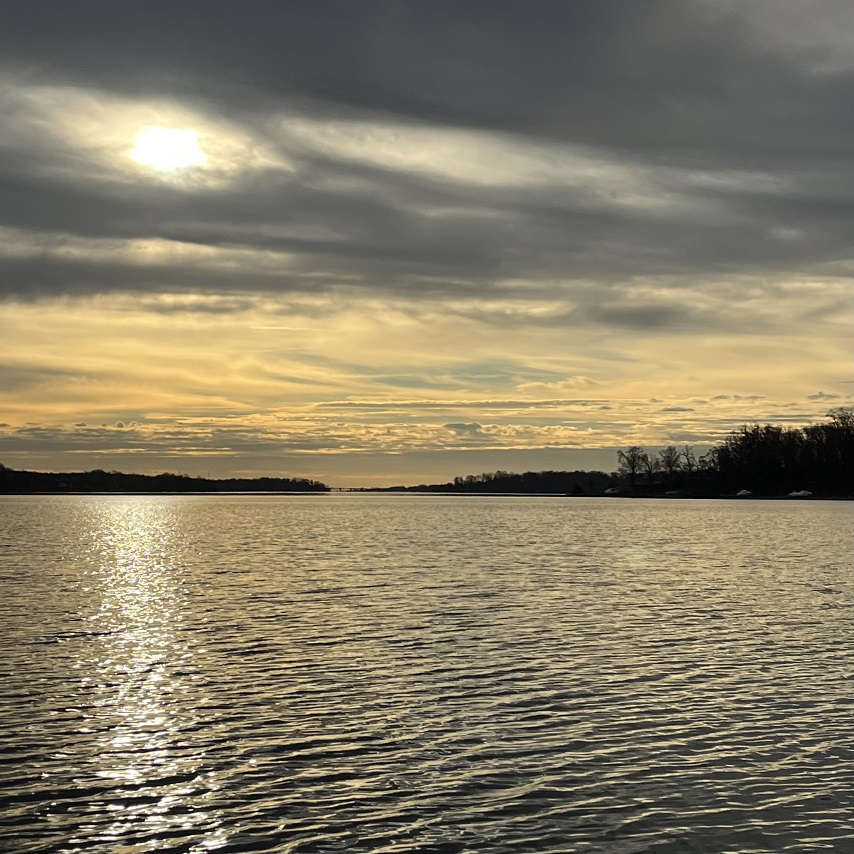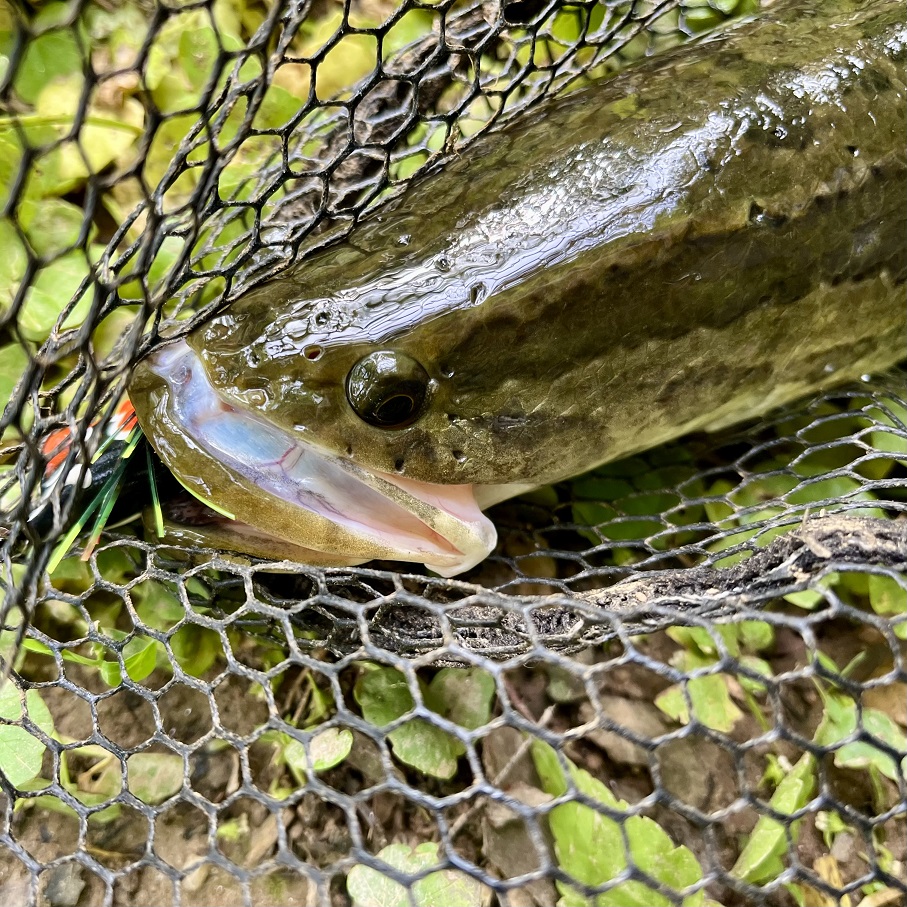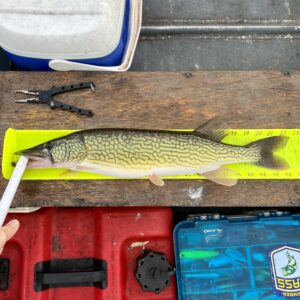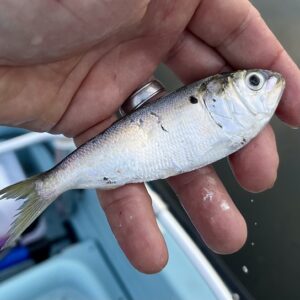Welcome to the Weekly Creel, a compilation of regional news and announcements for anglers and outdoor enthusiasts of the Chesapeake Bay region. Please email us directly at editor@reelchesapeake.com to have your organization’s news item or event listing considered for next week’s column. Per usual, here are direct links to the lastest, local fishing reports from Reel Chesapeake, On The Water, Maryland Department of Natural Resources, Anglers Sports Center, and FishTalk Magazine. The leading photograph (above): A December morning on the Severn River. Photo by yours truly.
Maryland’s Trophy Striper Season Eliminated in ’24
If you fish for striped bass in Maryland waters season after season, then you probably had a hunch the following news was coming. And I, for one, applaud it…although this is one small step toward solving a very complex problem.
The Maryland Department of Natural Resources submitted striped bass emergency regulations this week in an effort to bolster the species’ spawning population. These Maryland-specific actions will complement additional actions that will be implemented coastwide in 2024 by the Atlantic States Marine Fisheries Commission.
The emergency regulations propose to extend two periods already closed to targeting striped bass in the Chesapeake Bay and on the Susquehanna Flats next year. These extensions would result in the elimination of the Maryland Striped Bass Trophy season (May 1 to May 15) and the catch-and-keep fishery on the Flats (May 16 to May 31) in 2024.
“Maryland waters serve as the spawning grounds for many of the striped bass that migrate up and down the East Coast, and we take our leadership role in managing the overall population seriously,” said Maryland Department of Natural Resources Secretary Josh Kurtz. “That’s why we’re putting forth new regulations to protect spawning striped bass. These management actions will complement additional fishing cuts expected to be taken by the Atlantic States Marine Fisheries Commission next year in response to the coastwide population decline in recent years.”
Basically, fishing of any sort for striped bass will be completely off limits April 1st to May 15th throughout the Chesapeake Bay watershed, inclusive of all rivers, tribs, etc. And the closure extends to May 31st for the Susquehanna Flats portion of the Bay. After May 15th, catch and keep season will resume with a limit of 1 fish per day per angler (2 if on charter vessel), within a slot size of 19 to 31 inches. However, the upper size of the slot might reduce to anywhere between 23″ and 26″ in 2024 pending approval of the Atlantic States Marine Fisheries Commission’s Atlantic Striped Bass Draft Addendum II.
In fact, there’s a public hearing on the 2024 regulations scheduled for December 6th, 6–8 p.m., at Calvary United Methodist Church in Annapolis. Representatives from the ASMFC and DNR will be on site to review proposed regulations and field questions. For more information about the hearing, click here.
Now, for some additional thoughts of mine on the matter. For starters, the individual, ethical, recreational angler is not as impactful on the biology of striped bass as some would suggest. That’s my opinion. But I base it on the following: for example, this season (all of 2023), I estimate that I’ve personally caught upwards of 150 striped bass (and that’s really not much). Of those 150, I only kept one fish for consumption. And of those 150, only one fish was mortally hooked in the gill plates. Every other fish swam away from the boat in, I think, fair to good health.
Multiply my numbers and standards by thousands of anglers, and perhaps there’s a slight impact on the species. Slight. I don’t believe ethical anglers—keyword ethical—bear much responsibility for the decline of the striped bass population.
The bad numbers (fish killed) start to stack up, however, with several other types of angling: (1) illegal poachers—obviously when an angler keeps more than the legal limit or size of fish; (2) novice or irresponsible anglers that don’t know how to handle fish or just don’t care; (3) fleets of vessels pounding the schools day after day after day, all season long. And yes, I am eyeballing charters with 6 to 12 aboard each outing, keeping two fish per person with most of those fish barely measuring the 19″ minimum. It’s adds up to a lot of fish during a full season of fishing.
And (4), the fully-commerical fishery for striped bass—the vessels landing large quotas to fill dinner plates at restaurants, markets, etc. The amount of fish removed from the biomass becomes so large that we’re in the situation we are today. Maryland, as a state, removes more striped bass than any other state along the Atlantic seaboard.
Solutions? The trophy closure is a good start toward protecting the spawn and reminding anglers regionwide of the importance of this fishery. But Maryland—and Virginia!—need to do better for striped bass by reassessing and regulating the charter and commerical industries. The economics of both, however, make this probably the most challenging prong of striper angling to adjust. And adjacent industries would also be affected—tourism, restaurant, hospitality. Maybe start by reducing charter keepers per person to one fish. And reducing commercial quotas just a tad.
Meanwhile, poachers never go away. They will always be overharvesting their take, so I was pleased to see DNR graduate 14 new officers this week. Hopefully, Natural Resources Police will help curb illegal activity.
Honestly, we may need an entire paradigm shift of how we view this species—from good eating fish to one of pure sport. I know many anglers already feel this way and dutifuly practice catch-and-release. Otherwise, we may be staring at another moratorium, a la ’85–’90, in the near future. Or, perhaps, Maryland should declare the striped bass a game fish? It might make a googan angler think twice about the dink striper they just caught…and to release it safely.
It’s a tightrope to walk. And we’ve barely taken a step. Maybe I’ll see you on the 6th to talk about it.
Maryland Seeks Vendors to Promote Seafood Industry at National Expo
Here’s a great step toward helping the striped bass fishery—promote Maryland’s many other delectible species to the nation. The Maryland Department of Agriculture’s Seafood Marketing Program has booth space available at the Seafood Expo North America being held in Boston, Massachusetts, from March 10th to 12th, 2024.
The Department is seeking Maryland businesses to attend and showcase the best of Maryland’s seafood industry. With more than 25,000 people expected to attend the show, this expo is the largest seafood trade show in the United States and will give exhibitors access to distributors, wholesalers, retailers, and food service representatives from around the world. The Maryland seafood industry contributes nearly $600 million to the State’s economy and employs thousands of workers.
“MDA is committed to supporting the marketing of our State’s seafood,” said Maryland Department of Agriculture Secretary of Agriculture Kevin Atticks. “This expo is a key tool to connect Maryland companies with buyers from across the United States and the world.”
My take: let’s continue to get word out to the nation and world about the massive invasive fishery (blue catfish and northern snakehead) that happens to be very, very delicious. If Maryland’s Department of Ag and vendors can turn more restauranteurs, diners, and hospitality insiders on to these incredibly abundant species, then perhaps we’ll help the beleaguered striped bass in some meaningful way.
The department’s International Marketing Program is also able to connect companies attending this event with resources to help cover costs for those targeting international markets. Those interested in participating should contact the Maryland Department of Agriculture’s Seafood Marketing Director Matthew Scales at matthew.scales1@maryland.gov for an application and more information.
For more information on Seafood Expo North America, visit their website.
’23 Bay Dead Zone Smallest on Record
In other big news this week, the Chesapeake Bay Program reports that the Chesapeake Bay’s summer “dead zone” was the smallest it’s been since monitoring began in 1985, according to data released by the Chesapeake Bay Program’s monitoring partners: The Maryland Department of Natural Resources (MD DNR), Old Dominion University and Virginia Institute of Marine Science (VIMS).
“These results illustrate that nutrient input reductions can produce a significant improvement for fish, crab and oyster habitats, and that we need to continue and advance our management efforts throughout the watershed,” said Mark Trice, program chief of water quality informatics with MD DNR’s Resource Assessment Service.
Dead zones are areas of low oxygen (less than 2 milligrams per liter oxygen) that form in deep Bay waters when nitrogen and phosphorus (nutrients) enter the water through polluted runoff and feed naturally-occurring algae. This drives the growth of algal blooms, which eventually die and decompose, removing oxygen from the surrounding waters faster than it can be replenished. This creates low-oxygen—or hypoxic—conditions at the bottom of the Bay that limit habitat for crabs, oysters, fish and other wildlife.
Based on water quality data provided by MD DNR, the Virginia Department of Environmental Quality and Old Dominion University, MD DNR and VIMS individually estimated the size of the dead zone from May to October 2023 using separate methods. They then calculated hypoxic volume within the Bay’s mainstem from that time period. The MD DNR found that hypoxic water volume averaged 0.52 cubic miles, while VIMS reported a similarly low estimate of 0.58 cubic miles. Both estimates are the lowest on record and much lower than the historical average of 0.97 cubic miles taken from 1985–2022. These findings also align with the forecast released in June 2023, which predicted a 33 percent smaller than average dead zone.
According to MD DNR’s report, dissolved oxygen was better than average in May through August 2023, with early August having the lowest volume of hypoxia ever calculated during that time period. The dead zone was larger than average in September, but observations showed no hypoxic conditions in October. For the past four years, the summer dead zone has been below the long-term average size, as documented both by VIMS and MD DNR.
And that’s a wrap for this week’s Creel. If you have news to share, please send an email to editor@reelchesapeake.com.







